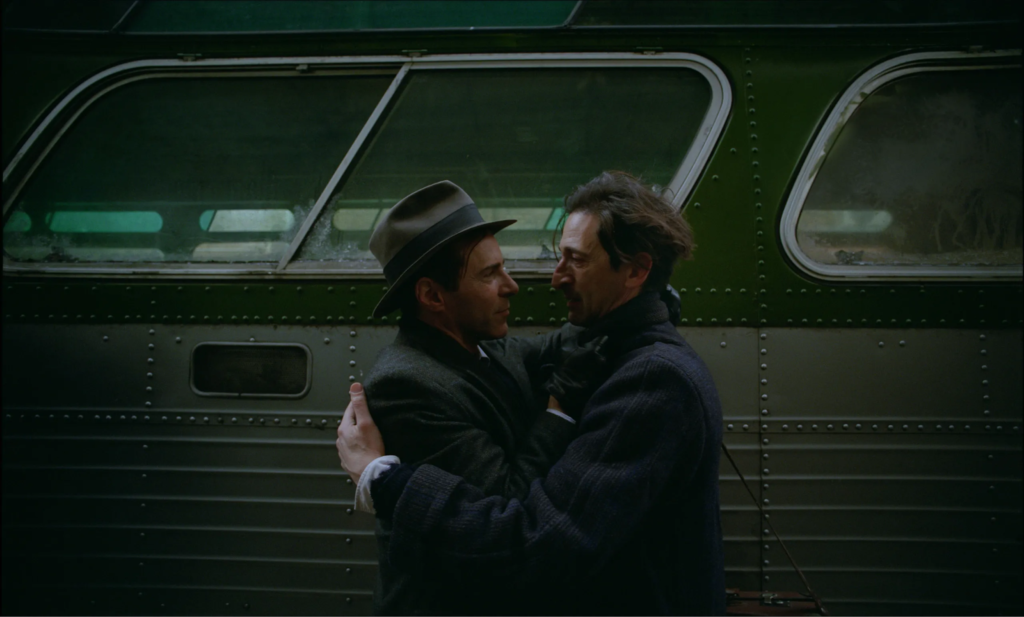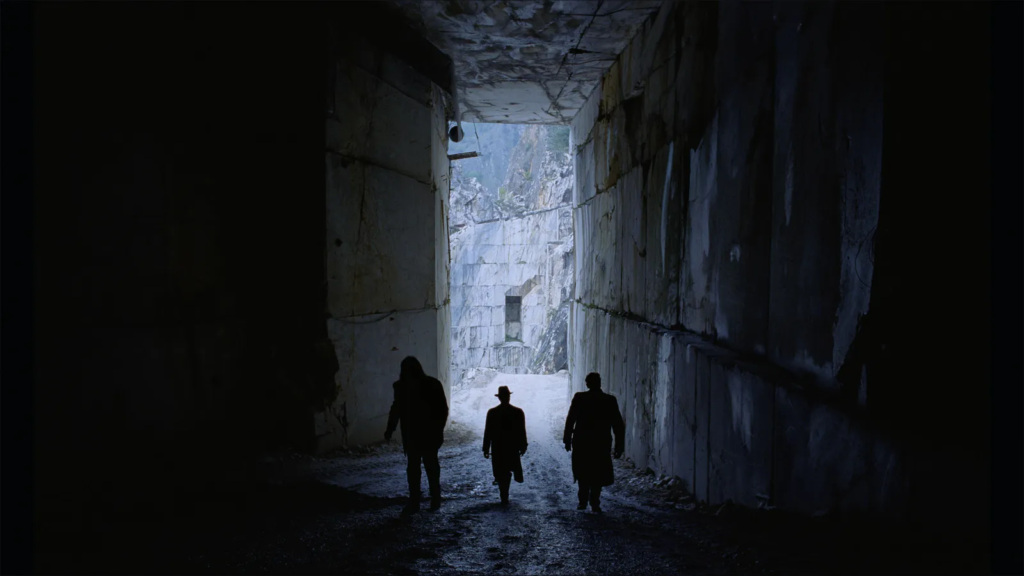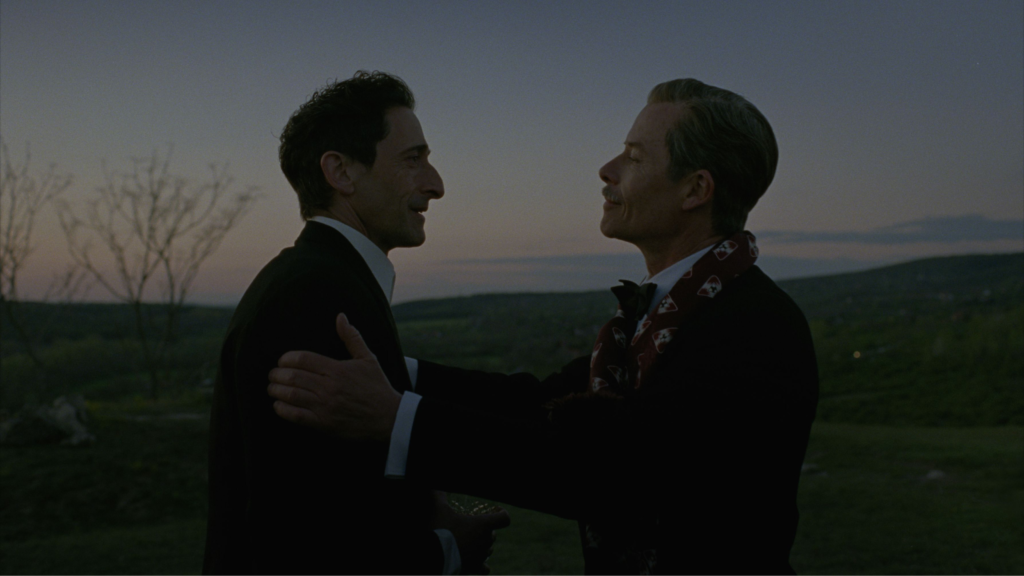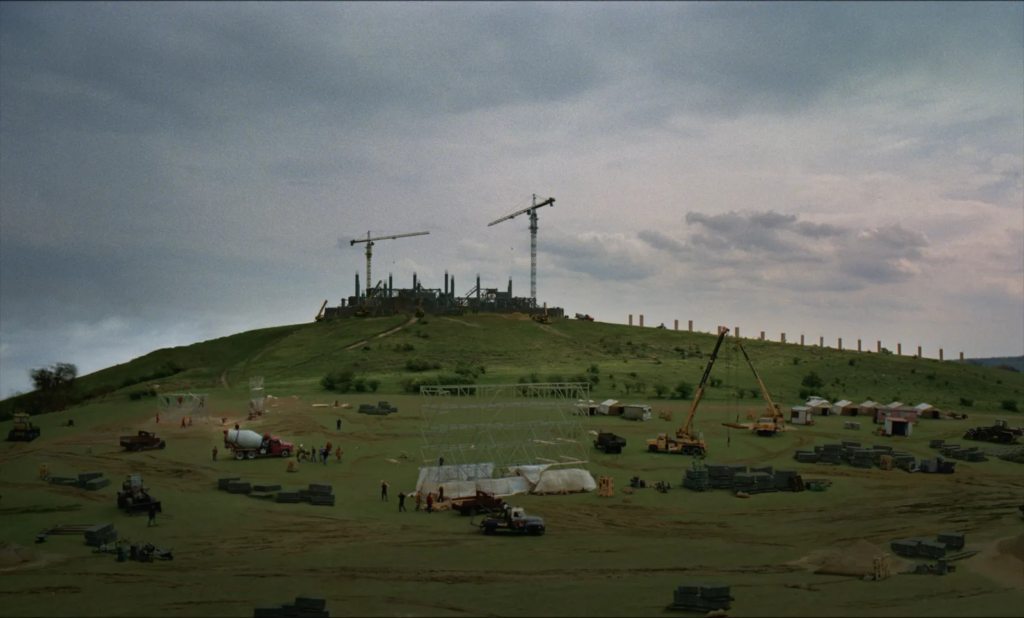The Brutalist: A Generation’s Great American Epic from Brady Corbet
THIS GENERATION FINDS ITS NEXT GREAT AMERICAN EPIC IN BRADY CORBET’S ‘THE BRUTALIST’
Topping this year’s conversation around awards season, it is no secret that Brady Corbet’s The Brutalist is one of the year’s most impressive feats. Nominated for seven Golden Globes, the A24 distributed spectacle walked away with Best Picture, as well as Corbet for Best Director and Adrien Brody for Best Actor. Though his performance as Hungarian architect Laszlo Toth is certainly worthy of these Hollywood accolades, recent controversy surrounding the use of artificial intelligence to correct his accent has now put the actor’s career defining performance into question.
The film is a masterful saga chronicling the life of a Hungarian Jewish architect and holocaust survivor who aims for a better future by immigrating to the United States. But Laszlo will soon find there is no such thing as The American Dream. Laszlo tries to build a new life for him and his highly educated wife Erzsebet (Felicity Jones), but the United States is a predominantly Christian nation where those who are different are not necessarily welcomed.
When The Brutalist screened at TIFF in 2024, Corbet addressed how this concept inspired the earliest drafts of the screenplay. The idea that when something is new or different, everyone hates it. They want new buildings torn down, newcomers kicked out. Innovation is only welcomed once those with the right name or influence label the change as visionary; something of the future to be accepted and celebrated. How often do we find ourselves watching films that we claim are ahead of our time? Praising filmmakers who take risks and create something truly avant-garde that are panned by critics and box offices around the world? The idea that something new is rarely accepted despite its objective beauty is an idea that Corbet plays with throughout this period epic.

The Brutalist begins when Laszlo arrives in Pennsylvania, where he is commissioned to design a library for an eccentric millionaire patriarch. Harrison Lee Van Buren Sr., played expertly by Guy Pearce, fails to recognize Laszlo’s genius until the other intellectuals in his circle begin praising the library for its innovative composition. Some time later, Harrison seeks out Laszlo to hire him for another project: a community center on the grounds of his lofty estate. Laszlo is given the opportunity of a lifetime to create something wholly his. To willfully give something to the world after so many years of the world taking from him. But how much of himself is he willing to give in order to see the project through?
The brevity and accomplishment of The Brutalist should come as no surprise, as Corbet has been working with some of the most influential foreign filmmakers this industry has seen since he was a young actor. From Greg Araki to Lars von Trier, Corbet has acquired a multitude of knowledge and mastery from these mentors that shows in all of his projects. But it’s clear The Brutalist will catapult him into major conversations and ultimately change the very fabric of the industry moving forward.

Corbet is bold and completely abandons all subtlety in constructing this great American epic, clearly inspired by projects of the period this film emulates. A valiant accomplishment, as the quest for authenticity can sometimes take audiences out of the experience when filmmakers aim to emulate certain periods, inherently feeling too modern through the blatant use of technology. Shot on 70mm film in VistaVision format, a rarity of its own, The Brutalist boasts an ambitious runtime at 215 minutes, including an overture and musical intermission. The look and feel, down to the smallest details and designs, makes us feel like we’re watching a film made in Post-World War II America. The Brutalist really captures the essence of this period by use of film and light, as well as brilliant production design and costuming. Every inch of frame has been decided and poured over as a brassy score roars with thundering music and unyielding tenacity. The camera is rarely still but for the moments we stay on samples of architecture, allowing us to feel the intimacy of every scene as though we are in the room with these characters.
“We are all slaves to capitalism.”
The film plays like the great American novel in film form, a three and a half hour behemoth that tells the tale of what it means to be an immigrant, an outsider, an artist. It is a period epic packed with visual splendor and texture, with every detail accounted for in order to make this feel like a film from the mid-1900’s. It is a harrowing story that sheds light on the truth of America—of two broken men who have been chewed up and spit out by the capitalist machine. It explores the erosion of these two souls and how this single project changes them entirely. It asks artists what they are willing to sacrifice in order to achieve their greatest work. It acts as a metaphor for every creative industry, particularly film and Hollywood, where artists are treated as commodities rather than people. It is a story of power, of envy, of dominance.

This is explored through the relationship between Harrison and Laszlo, which begins as a hopeful friendship until becoming something horrifically perverse. Harrison, played with a slew of idiosyncrasies by Pearce, is masquerading as an aesthete or faux intellectual. He clearly has the money and power to participate in conversations of substance, but when sitting at the dinner table across from Laszlo and Erzsebet, it is clear he is less educated in art than either of them. Which, to a man of his ego and status, is a problem. He tells Laszlo that their conversations are intellectually stimulating because he values how the architect makes him feel. Harrison needs validation from those around him, particularly those he admires for having the creative qualities and vision he lacks. He lusts after what Laszlo has—what Laszlo is. Soon enough, we realize Harrison isn’t necessarily interested in collecting Laszlo’s work. He wants to collect Laszlo’s soul. He sees the architect as something valuable that can be bought. Something unique, beautiful, singular. Despite already having everything any man could ever want, it is the unattainable that Harrison covets.

A sequence set in Carrera represents how this particular marble will only last another five hundred years. It is a beautiful mountain range but humanity—and the commercial systems we’ve created in the name of beauty—has taken a bite of it. And we will continue eating it up until there is nothing left. Until those mountains are gone and their natural beauty and splendor has been robbed and spent in order to line our kitchens and bathrooms. Something exquisite, destroyed by our tireless need to feel that part of it belongs to us. This mirrors the relationship between Harrison and Laszlo.
When speaking of what inspired this particular project at the TIFF premiere in 2024, Brady Corbet had this to say:
“My wife and I wrote it seven years ago and at the time we were pretty pissed off about an experience we just had where…you know…making a movie is complicated. Because you end up in bed with folks that have different morals and ethics than you do. You’re trying to protect the flame of your project and you try to put the project first, but in the process you put everyone else in your life last.”
A beautifully written metaphor packed with visual allegories, The Brutalist is a deep exploration of the cost of working under someone who doesn’t share your ideals. Creative matters aren’t always understood by financiers. Films and series and other forms of art aren’t always appreciated by those desperate to understand them. How many films have been sundered by studios or executives who value money before ingenuity? How many projects are made with commerce in mind over creativity? How many corners are cut to save a penny? What happened to uncompromising art? What happened to artists who refused to be subtle in their work? Who bleed into the background of their own work while those who profit most take credit for what they had no hand in creating themselves? Who, in fact, tried to make the very facets of the project that humanity resonates with, disappear before they were even made?
These are just a few of the questions Corbet and cowriter Mona Fastvold pose with this phenomenal screenplay. It points at a larger conversation the industry often shies from regarding the relationship between creativity and commerce. It is the very reason we end up with Director’s Cuts of our favourite films—and why Corbet was uncompromising with the runtime of his own.

Beyond these themes, we follow Laszlo’s journey quite intimately, allowing us to witness the fine line between passion and compulsion. How this obsession with his project affects his marriage, his personality, his very identity. We see and understand why an artist must see something through even if the project isolates them, changes them or kills them.
“Every film about the American dream is about how people finally make it work. I really wanted to make a film about the American myth and the American dream where it doesn’t work. And they have to leave. So much of this film is characters looking for somewhere to belong.”
And therein lies the tragedy. Perhaps there is nowhere Laszlo truly belongs. It is a sensation all artists can relate to. There is only one place that truly feels like home—within the art they create. This is particularly jarring once we realize that the home Laszlo had been building with this community center, financed by Harrison, was meant to emulate the very camps he was kept in during the Holocaust.
The Brutalist is a genuine masterpiece with expert performances, groundbreaking production design and cinematography, a bombastic yet intimate score and truly innovative direction. It is our generation’s great American epic that poses a multitude of questions regarding artistry, creativity, acceptance of the ‘other’, immigration and isolation, honour and truth, passion and possession, as well as the quest for meaning and legacy. It is a tragically beautiful film that warrants multiple viewings despite its gargantuan runtime and will likely scoop more than a few awards up at the Academy Awards next month.
Watch the trailer for The Brutalist below
[Review by guest blogger Jurgen Sosa]

